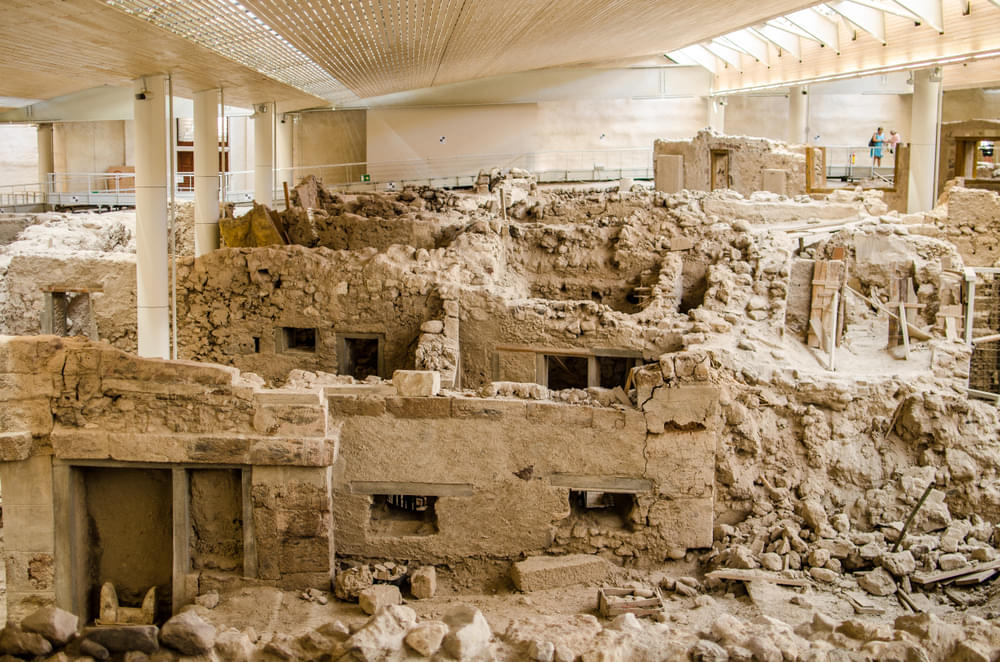About Akrotíri Archaeological Site
The ruins of the ancient Minoan settlement, completely ravaged by a colossal volcanic eruption in 1627 BC, is one of the extraordinary places to visit in Santorini Island, attracting travelers from around the globe.
The excavated sites with intricate carvings, frescos, and the artifacts displayed in the museum offer glimpses of Bronze Age civilization. You can view the mud-brick constructions that remain standing, protected from strong winds by the roof built over the town. Modern-day Akrotiri is a spectacular town with blue-domed churches, chocolate-box houses, and fine-dining outlets.
Highlights: Bronze Age artifacts, archaeological excavations revealing rituals of Minoan civilization.
Akrotíri Archaeological Site Highlights
• Visit the ancient and most significant Akrotiri Archaeological Site, which is regarded as one of the best places to visit in Santorini.
• Take a stroll along the walkways and a bioclimatic roof suspended above the archaeological remains of Akrotiri.
• Learn above the excavation of this archaeological site that was once buried in the ash and layers of pumice during a volcanic trigger by an earthquake.
• Watch several objects and frescoes from Akriti that are on display in pictures as soon as you enter the urban center of the archaeological site.
• Witness the elaborate drainage system and sophisticated multi-storeyed buildings embellished with exquisite wall paintings in the Akrotiri Archaeological Site.
• Get to know about the prosperity of the town through the quality and quantity of furniture and ceramic vessels in the archaeological site.
• Understand a vast network of communication across the Mediterranean through this archaeological site that ranges from Cyprus to Egypt and Syria.
